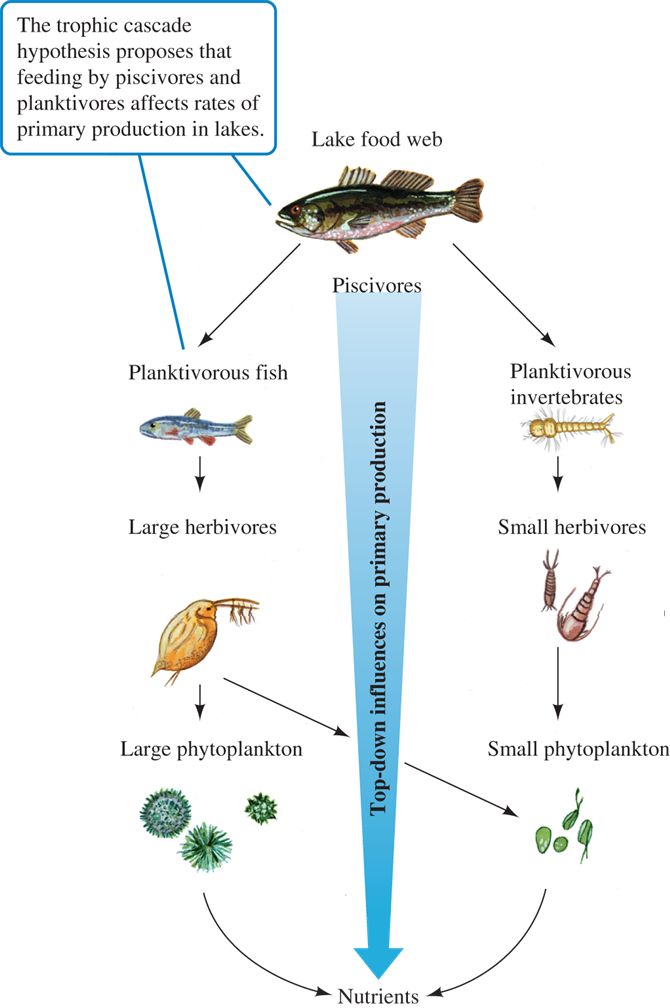 |
| Previous Image | Next Image |
| Description: Stephen Carpenter, James Kitchell, and James Hodgson (1985) proposed that while nutrient inputs determine the potential rate of primary production in a lake, piscivorous and planktivorous fish can cause significant deviations from potential primary production. In support of their hypothesis, Carpenter and his colleagues (1991) cited a negative correlation between zooplankton size, an indication of grazing intensity, and primary production. Carpenter and Kitchell (1988) proposed that the influences of consumers on lake primary production can extend to other levels throughout food webs. Since they visualized the effects of consumers coming from the top of food webs to the base, they called these effects on ecosystem properties “trophic cascades.†The trophic cascade hypothesis (fig. 19.15) is very similar to the keystone species hypothesis (see chapter 17). However, notice that the trophic cascade model is focused on the effects of consumers on ecosystem processes, such as primary production, and not on their effects on species diversity.
Picture Stats: Views: 5439 Filesize: 65.44kB Height: 1008 Width: 670 Source: https://biology-forums.com/index.php?action=gallery;sa=view;id=2029 |
